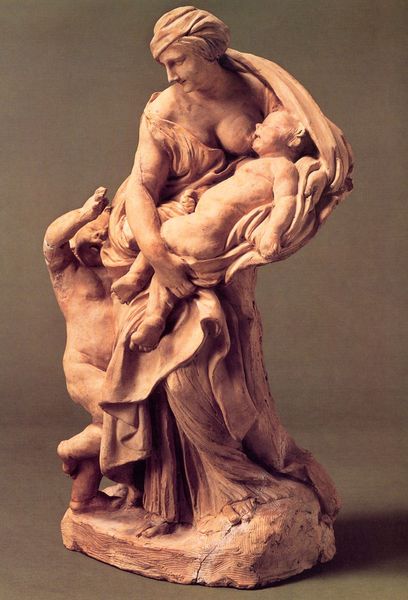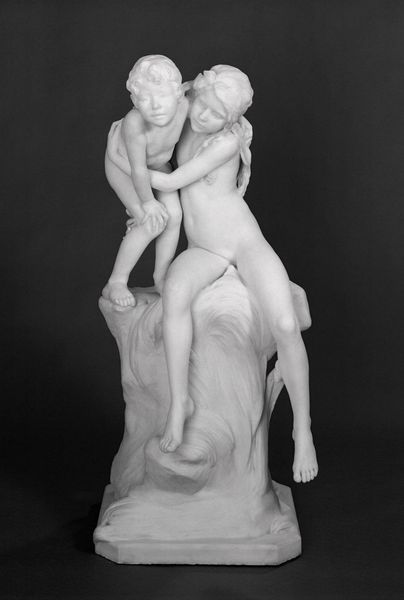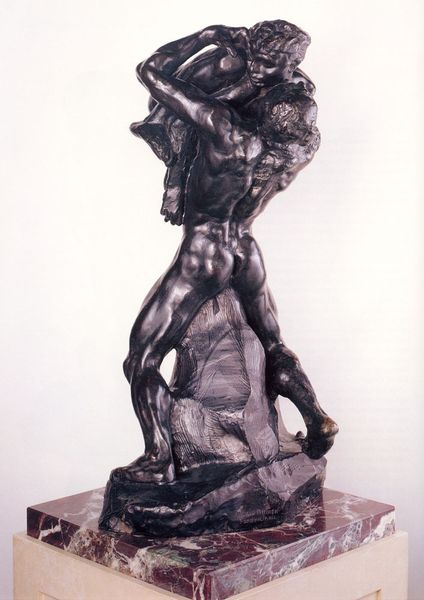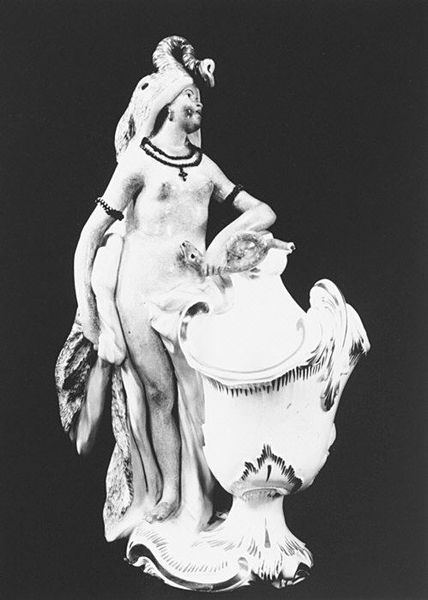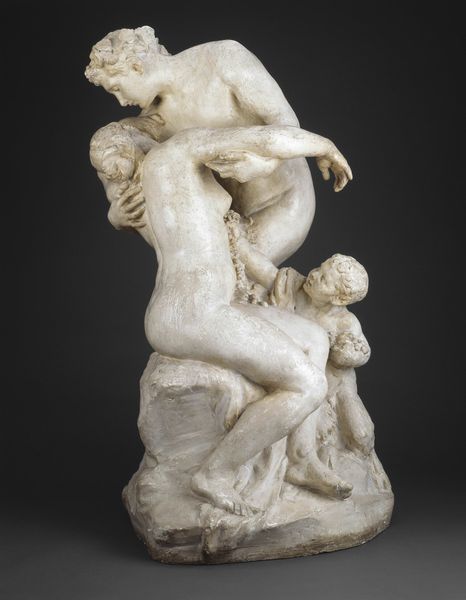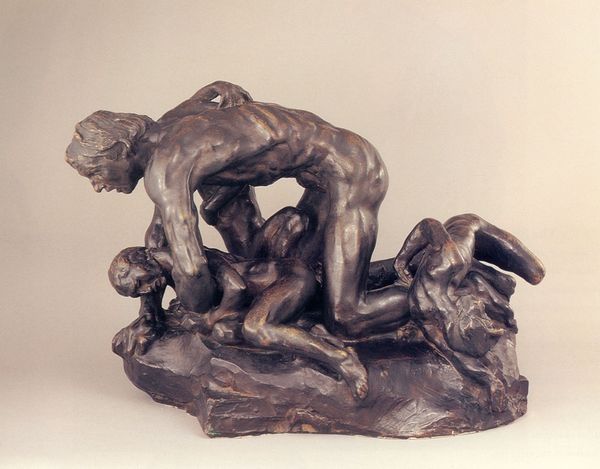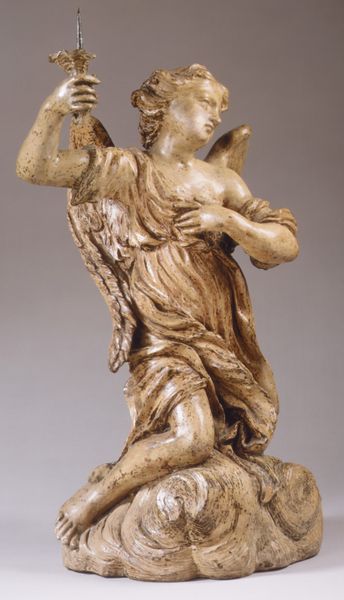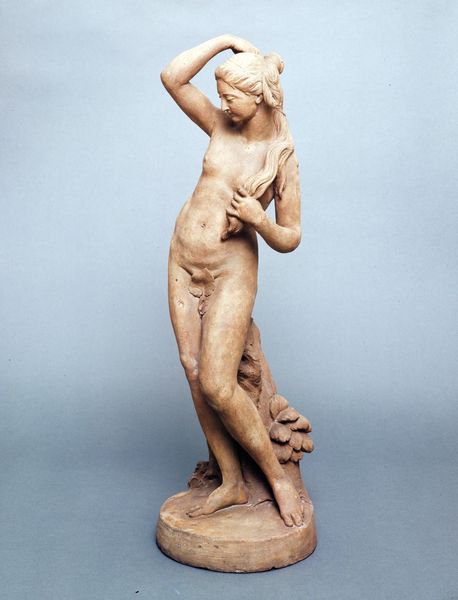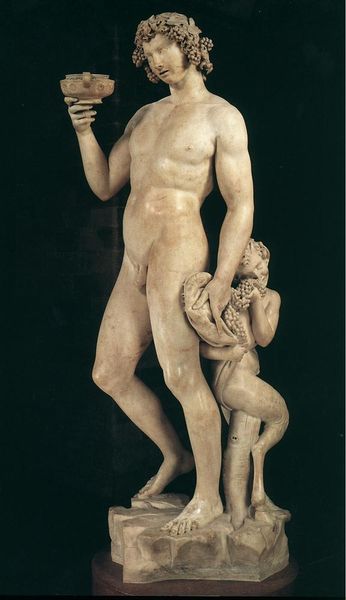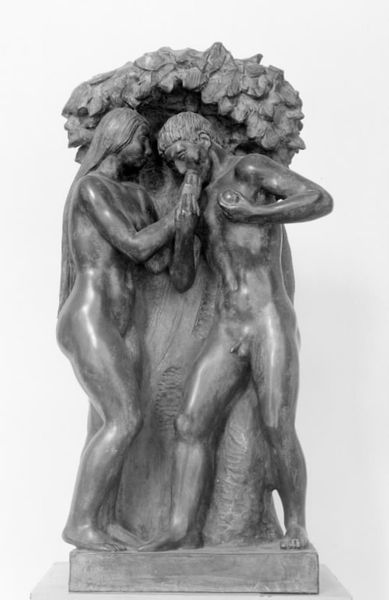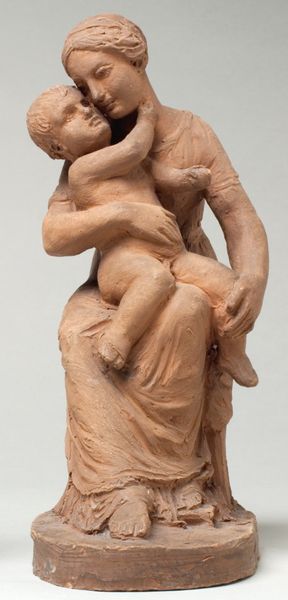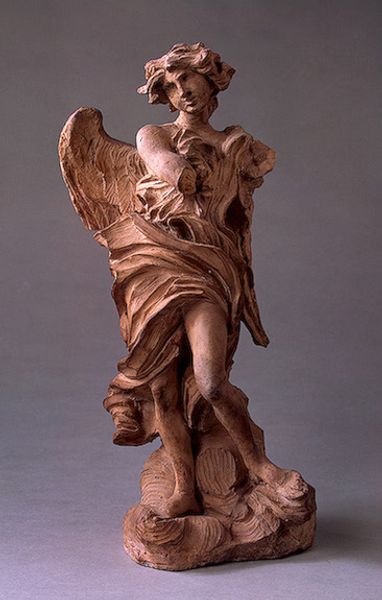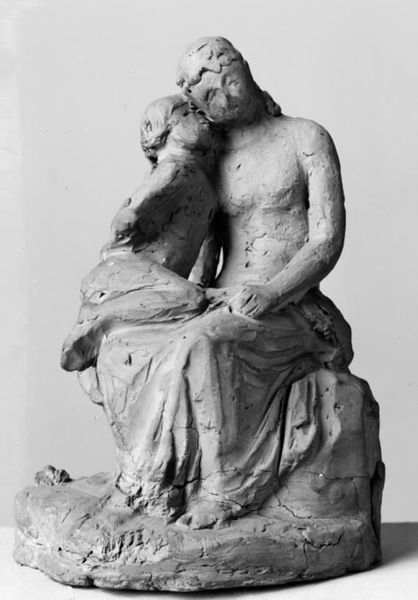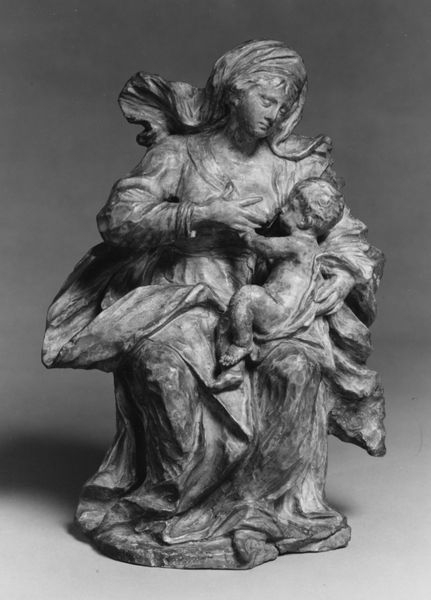
Copyright: Public domain
Curator: Welcome! We're standing before Auguste Rodin's "Monument to Victor Hugo (First Project)", crafted around 1890. The work, a bronze sculpture, embodies a Romantic yet Modern sensibility. What are your immediate thoughts? Editor: My initial impression is of tortured genius. The figures seem caught between worlds. The surface texture and raw modelling give it a very visceral, immediate feel, as if Rodin just stopped working on it yesterday. There is also, though, a rather static energy. Curator: It's interesting you note that tension. The sculpture reflects Rodin's struggle to capture Hugo’s multifaceted persona—the poet, the politician, the exile. It's a physical manifestation of trying to encapsulate a giant of 19th-century France. Looking at it now, one sees how its visual vocabulary evokes the notion of powerful male figures central to 19th-century civic ideology. Editor: Visually, I am drawn to the layering of the figures, and what feels like allegorical beings surrounding Hugo. They add symbolic density. Can you speak about this artistic symbolism? Curator: Absolutely. Rodin often employed symbolic figures to represent abstract concepts, but those figures are rooted in a distinctly gendered reading of muse and history, one that reinforces male authority even while seemingly complicating it. Here, perhaps we see Hugo as a man caught between inspiration and judgement. He is supported, maybe, by forces beyond his control. The gesticulation calls to mind earlier notions of History Painting. Editor: Indeed, and I am curious, looking at how Victor Hugo’s placement as a prominent figure suggests he's carrying a historical weight. Curator: Yes. Considering Rodin's project was deeply embedded in the artistic and political currents of his time, what we observe today is how Modernist explorations grapple with inherited ideas about monumental sculpture and public figures. The tension between innovation and tradition is quite palpable. We cannot see Victor Hugo separately from what his image represents across many intersections. Editor: I'm struck now by how the visual language embodies, in this case, a very active dialogue with tradition in the search for ways to move into the future. It really highlights, also, how such dialogue does and still carries so many encoded elements in the making of historical narrative and its visual translation. Curator: Indeed. Examining Rodin's creative struggles reminds us that the figures and historical processes we build around our most famous people are never set in stone.
Comments
No comments
Be the first to comment and join the conversation on the ultimate creative platform.
